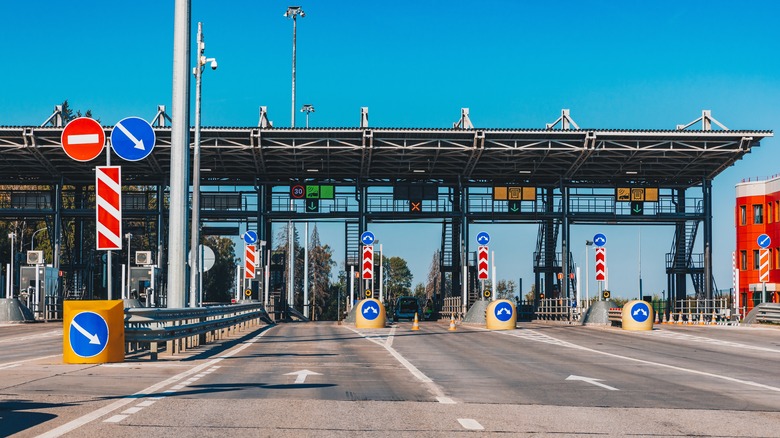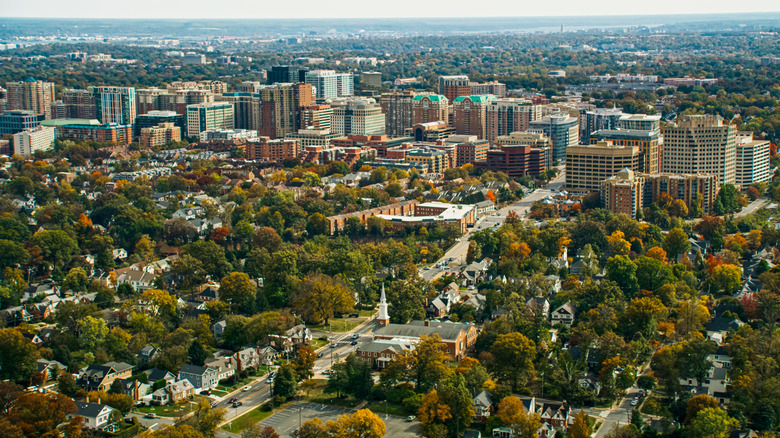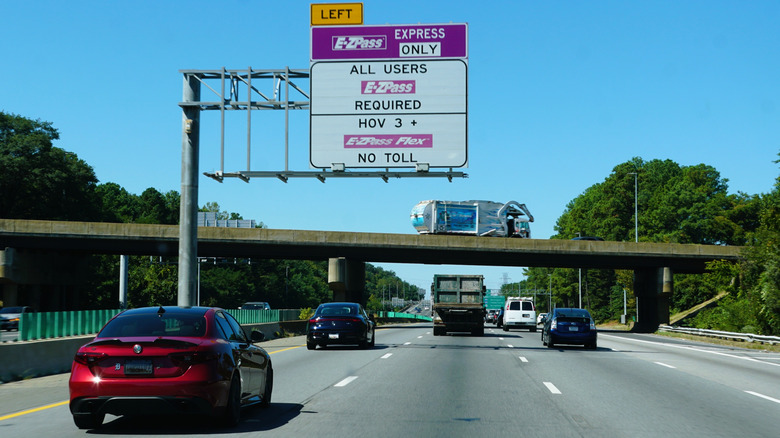This Southern State Has The Most Expensive Toll Roads In America
Toll roads pulled in almost $17.7 billion across the U.S. in 2023, according to the Federal Highway Administration. That number shows just how dependent Americans have become on state pay-per-use highways to work their way around increasingly congested metropolitan areas. Between 2012 and 2024, the National Conference of State Legislatures found that 56 of the 90 new tolling facilities nationwide were managed lanes — a class of road explicitly designed to make traffic less of a hindrance for drivers.
That brings us to Virginia: The self-proclaimed "mother of states" also appears to be the mother of pricey tolls. The state pulled in around $113.6 million in toll revenue in 2023, and that figure doesn't even reflect the full reach of its network. This revenue comes at a high cost for drivers, with LendingTree reporting Virginia's maximum rates on interstate tolls average $3.27 per mile — almost double Pennsylvania's $1.73. The state also leads in bridge and tunnel tolls, with maximum rates averaging $7.50 per mile. To put that in perspective: New York — home to one of the most expensive toll roads in the country — has the second highest bridge and tunnel tolls and only averages $4.38.
Just in Northern Virginia, the Joint Legislative Audit and Review Commissions reports there are upwards of 100 miles of tolled roads, many managed by a private concessionaire. It's not an especially large state, so it doesn't earn even close to the most toll revenue of any state in the U.S., but Virginia's heady sprawl of expensive toll roads ensures that its drivers are shelling out quite a bit of cash to get around.
The reason Virginia drivers pay premium toll rates
Virginia's high tolls trace back to its public‑private partnerships — arrangements that hand private operators wide control with barely any state oversight. The I‑495 Express Lanes Concession agreement, for instance, gives Capital Beltway Express, LLC full power to set tolls. It uses congestion pricing to manage traffic, increasing rates up during peak hours and adjusting them freely as conditions shift.
But the real sting is how long these deals last. Virginia's toll system was built to favor private profits through long concession periods that keep prices high for decades. The I‑495 Express Lanes run under an 85‑year concession signed in 2007 — five years for construction, 80 for operation. Virginia shares toll revenues with the private operator only when returns exceed specific thresholds, getting 5% of excess revenues when the internal rate of return for the concessionaire reaches between 7.94% and 8.496%, rising to 30% when returns reach above 8.966%.
The financing explains why: $2.068 billion in project costs were covered by private investors, including $589 million in private activity bonds, another $589 million in TIFIA loans, and $348 million in private equity, according to the Federal Highway Administration. This debt load creates financial pressure to maximize toll revenue, leading to the premium rates that make Virginia's tolls so infamously pricey.
What Virginia's tolls mean for everyday commuters
Virginia's steep tolls are changing how people get around, and the state is rolling out relief programs faster to keep up with the cost squeeze. The Virginia Department of Transportation's (VDOT) 2024 annual report shows the Hampton Roads Toll Relief Program swelled from 2,150 participants in 2021 to 21,000 in 2024 — a clear sign of growing pressure on commuters. The program cuts tolls in half for residents making under $65,000 a year, with a newer program offering even more aid to those with a Virginia E-ZPass earning under $50,000 in Norfolk, Portsmouth, Hampton, Newport News, and Franklin.
Still, the impact runs deeper than budgets. Virginia's toll structure is changing commuting habits across the Washington, D.C., metropolitan area. The Metropolitan Washington Council of Governments found that by 2019, 72% of express lane users were driving alone, undercutting the original point of reducing congestion. Only 15% of express lane users said lane availability changed how they traveled, compared with nearly half of high-occupancy vehicle lane drivers, who were more willing to shift their routes or routines. The sustainability of Virginia's approach also faces mounting challenges as demand for relief nor far outpaces available funding. VDOT projected participation could exceed 30,000 in the 2024 report, while funding at that time only supported about 16,000.


